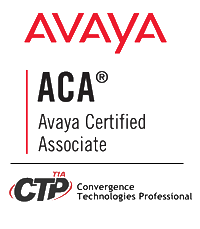 I, in general have been very quiet in the technical front as of late. This last fall one of my very good friends and mentors Ron Choura passed away suddenly. After loosing another close mentor of mine this just the year before it hit me really hard. Both Ron and Dr. Muth were instrumental in my schooling and career advancement.
I, in general have been very quiet in the technical front as of late. This last fall one of my very good friends and mentors Ron Choura passed away suddenly. After loosing another close mentor of mine this just the year before it hit me really hard. Both Ron and Dr. Muth were instrumental in my schooling and career advancement.
With Ron Choura’s passing, his upcoming class was missing an instructor. I was asked to fill in for the class that was set to start a few weeks later; I couldn’t think of a better tribute than to teach the class that I enjoyed most during my time at MSU. My manager at my day job helped with the class as well. The class was titled “Advanced Network Design” and had a focus on how the telecommunications world works from the phone jack of your house to the jack of the other person you called. It also had a project where the students were to write an extensive RFP (Request for Proposal) for a telecommunications based company.
The class itself went off without a hitch. It made me realize how much work running a class like that really is. Despite knowing the material cold (heck! it’s stuff I do during my day job), it still required about 12 – 14 hours of prep time for every week’s class. Between prepping for the power-point, grading, setting up the next assignment and setting up the next exam (we had exams each week), it took a lot more man-power than I had ever expected out of a 4 hour class.
I’ve been out of school for nearly 7 years at this point, so interacting with the students was very interesting. When I found out I was going to be teaching the class, I immediately dove in and did the research as to what tools they would want to use to communicate, how to best reach out to them, etc. I had a chance to reach out to my favorite EduTech professional Leigh who also gave me some useful pointers.
Some of the things that as a telecommunications professional I “knew” but my students made very apparent :
- Not a single one of them had a land-line telephone at home. Many of their parents didn’t have one at home either.
- Only two of the students were on Twitter. Most of them saw Twitter as what the older generation and celebrities used.
- They all, at one time had MySpace accounts. None of them have logged in to the service in ages.
- Facebook is their primary communications method — but only to their friends.
- To many of them, the phone company IS their wireless provider.
- They see getting most of their telecommunications services (data/video) in the future either via wireless or fiber.
- They are not excited by offerings from their telecommunications providers — AT&T / Comcast / etc. They feel there is always more marketing behind their offerings than substance.
All in all, the class was a lot of fun, and it gave me insight into how I can best offer MSU Telecom’s own services to the current generation of college students.
So, now all that is out-of-the-way — it’s time to return to my tech and telecom blogging 🙂


